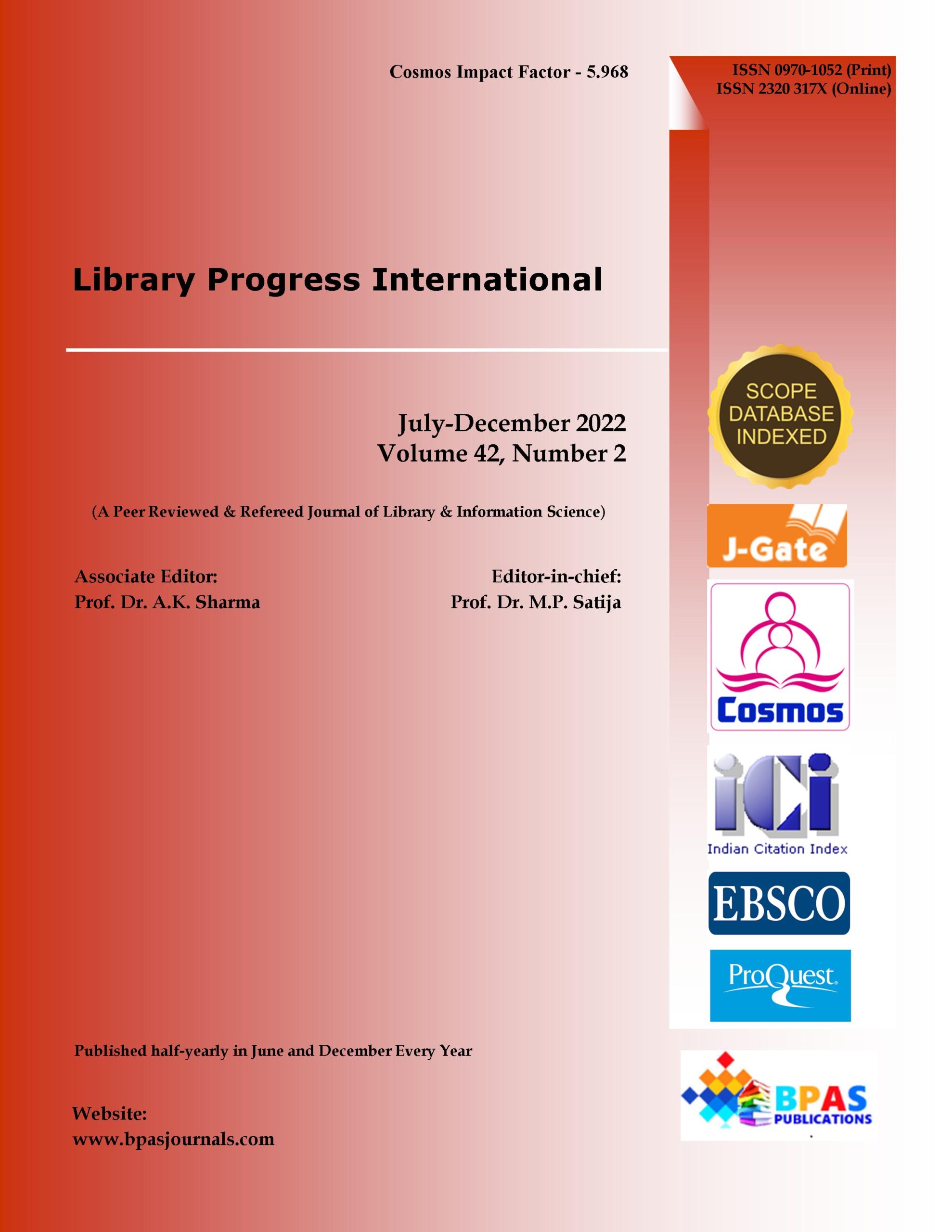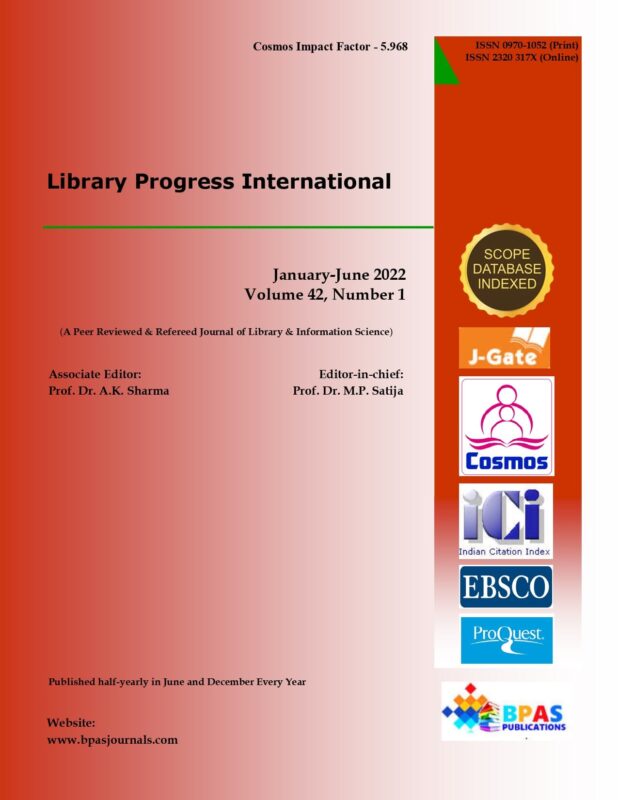Use of Electronic Information Resources among undergraduates in Selected Private Universities: A Case Study
9.38$
Magnus Osahon Igbinovia, Bayor Odelami
Library Progress International
Vol.42, No.2, July-December 2022: P.325-339
DOI: 10.5958/2320-317X.2022.00034.4
Original Article
Description
Use of Electronic Information Resources among undergraduates in Selected Private Universities: A Case Study
*Magnus Osahon Igbinovia, **Bayor Odelami
Author’s Affiliation:
*Head, Electronic Resources Library, and Adjunct Lecturer, Dept. of Library & Information Science, Ambrose Alli University, Ekpoma Edo State, Nigeria
E-mail: magnus.igbinovia@aauekpoma.edu.ng, infor.migbinovia@hmail.com
**Post Graduate Student, Department of Library, Archival and Information Studies, University of Ibadan, Oyo State, Nigeria
E-mail: Bayoodelami@gmail.com
Corresponding Author: Magnus Osahon Igbinovia, Head, Electronic Resources Library, and Adjunct Lecturer, Dept. of Library & Information Science, Ambrose Alli University, Ekpoma Edo State, Nigeria
E-mail: magnus.igbinovia@aauekpoma.edu.ng, infor.migbinovia@hmail.com
(Received on 13.06.2022, Revised on 06.08.2022, Accepted on 24.09.2022, Published on 15.12.2022)
How to cite this article: Igbinovia M.O, Odelami B. (2022). Use of Electronic Information Resources among undergraduates in Selected Private Universities: A Case Study. Library Progress International, 42(2), 325-339.


